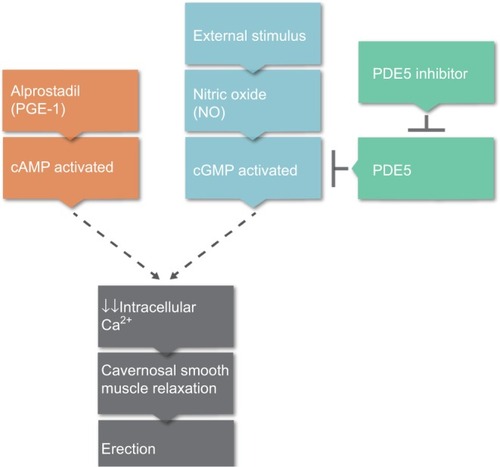Figures & data
Table 1 Organic and psychogenic origins of erectile dysfunction
Figure 1 Physiological pathway to erectile response.
Abbreviations: PGE1, prostaglandin E1; cAMP, cyclic adenosine monophosphate; cGMP, cyclic guanosine monophosphate; PDE5, phosphodiesterase type 5.

Table 2 Limitations and adverse events of erectile dysfunction (ED) treatment with phosphodiesterase type 5 (PDE5) inhibitors
Table 3 Efficacy and safety of topical alprostadil cream for the treatment of erectile dysfunction: summary of key clinical trials
